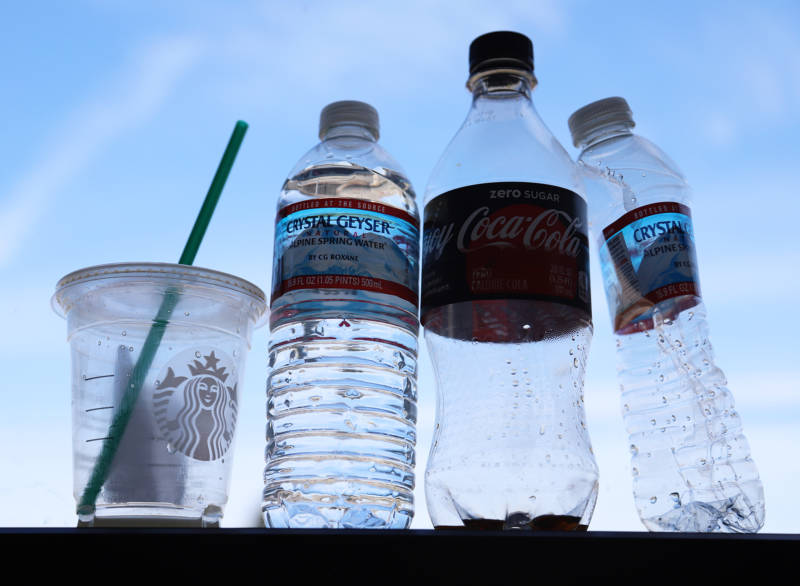According to research from UC Santa Barbara, published two years ago, half of all the plastic that ever existed was produced within the prior 13 years.
The estimate from the new study, which appeared last week in the scientific journal Environmental Science & Technology, is based on 402 data points from 26 different studies that examined plastics in things that people might consume.
Studies show that these tiny particles, known as microplastic, have been found in ambient air, salt, sugar, bottled water, honey, seafood, and tap water — one study even found it in beer. Scientists define microplastics as any particles up to 5 millimeters across, or about the size of a single piece of confetti, though many are so small they’re invisible to the human eye.
To come up with his consumption estimates, Covernton correlated the documented presence of microplastics in food with the recommended dietary intake for people in the U.S., as determined by the federal Department of Health and Human Services.
If anything, he says, it’s a low-ball estimate.
Scientists don’t know how much plastic is in red meat, poultry, grains, dairy, fruits and vegetables, so Covernton’s estimate accounts for only 15% of the average person’s caloric intake. He says the actual amount is likely far higher.
“I think we need to start really reconsidering whether we want to keep making this huge amount of plastic which continually contaminates our environment and our food,” Covernton said.
The study draws a “rational estimate in terms of [plastic consumption] count” for the average American, according to John Torkelson, a chemical engineer with a focus on plastics at Northwestern University , who was not involved in the study. “They did a service.”
However, some of the study’s research conclusions might be too strong, says Torkelson, who is involved in a new plastic and public health program at the Institute for Sustainability and Energy.
For example, better recycling programs might be a more effective way to reduce human consumption of microplastic, rather than reducing plastic production and use, as suggested in the paper.
For example, Torkelson suggests that the Great Pacific Garbage Patch is not so much an issue of general use plastic, “but how waste is handled in places like the Philippines, Indonesia, China, Vietnam and Bangladesh.”
Though he agrees that plastic in the ocean is a significant problem, Torkelson says more research is needed.
Last week, marine biologists in California published a separate study that found that Monterey Bay is swimming in microplastic and suggests that the deep sea, the Earth’s largest habitat, could be its biggest repository of small plastic-debris.
In 2017, the Microplastic Project at the San Francisco Estuary Institute found that wastewater treatment plants discharged 7 million plastic particles into San Francisco Bay each day, possibly more than any other major water body in the U.S.
Plastic in the ocean is a particular problem because it’s consumed by mussels, sponges and other filter feeders. The plastic is indistinguishable from the food normally consumed by these small ocean creatures.
From there, plastics can enter the larger food web. In 2014, one study found an average portion of oysters from the Atlantic Ocean contains around 50 plastic bits, while mussels from a farm in Germany had 90.
Covernton’s paper mostly focused on the American diet, but it notes that seafood is a significant source of ingested plastic for people anywhere.
“That could mean that in certain parts of the world where seafood is a much greater part of the diet — Japan, or other parts of Asia — there could be a greater impact,” Torkelson said.
But is all that plastic harmful to humans? Covernton says more research is needed on that, as well.
“We don’t fully understand it yet,” he says. “It’s early days in terms of the risk to human health.”
KQED Fuhs Fellow Jazmine Mejia Munoz contributed to this report.

